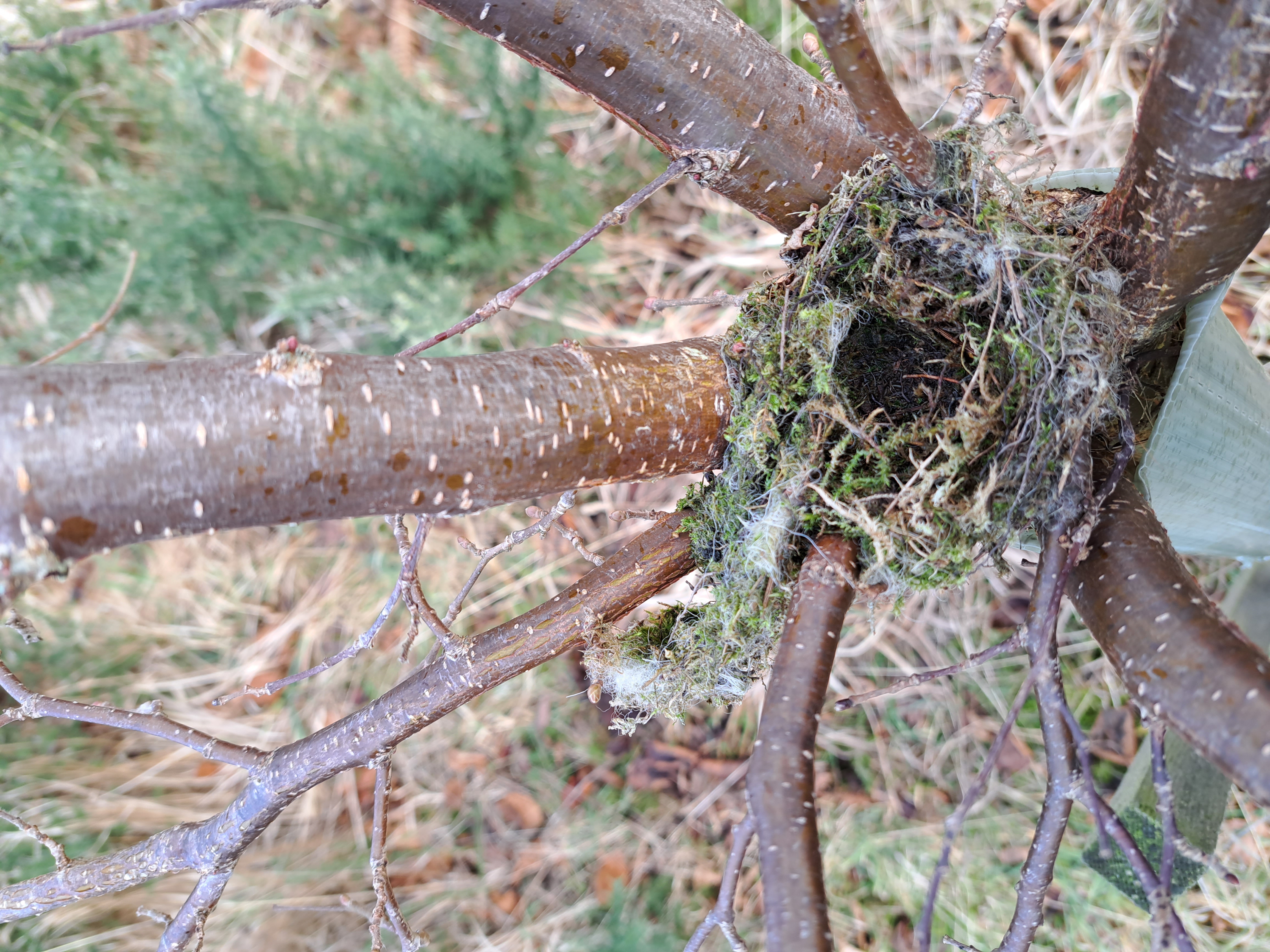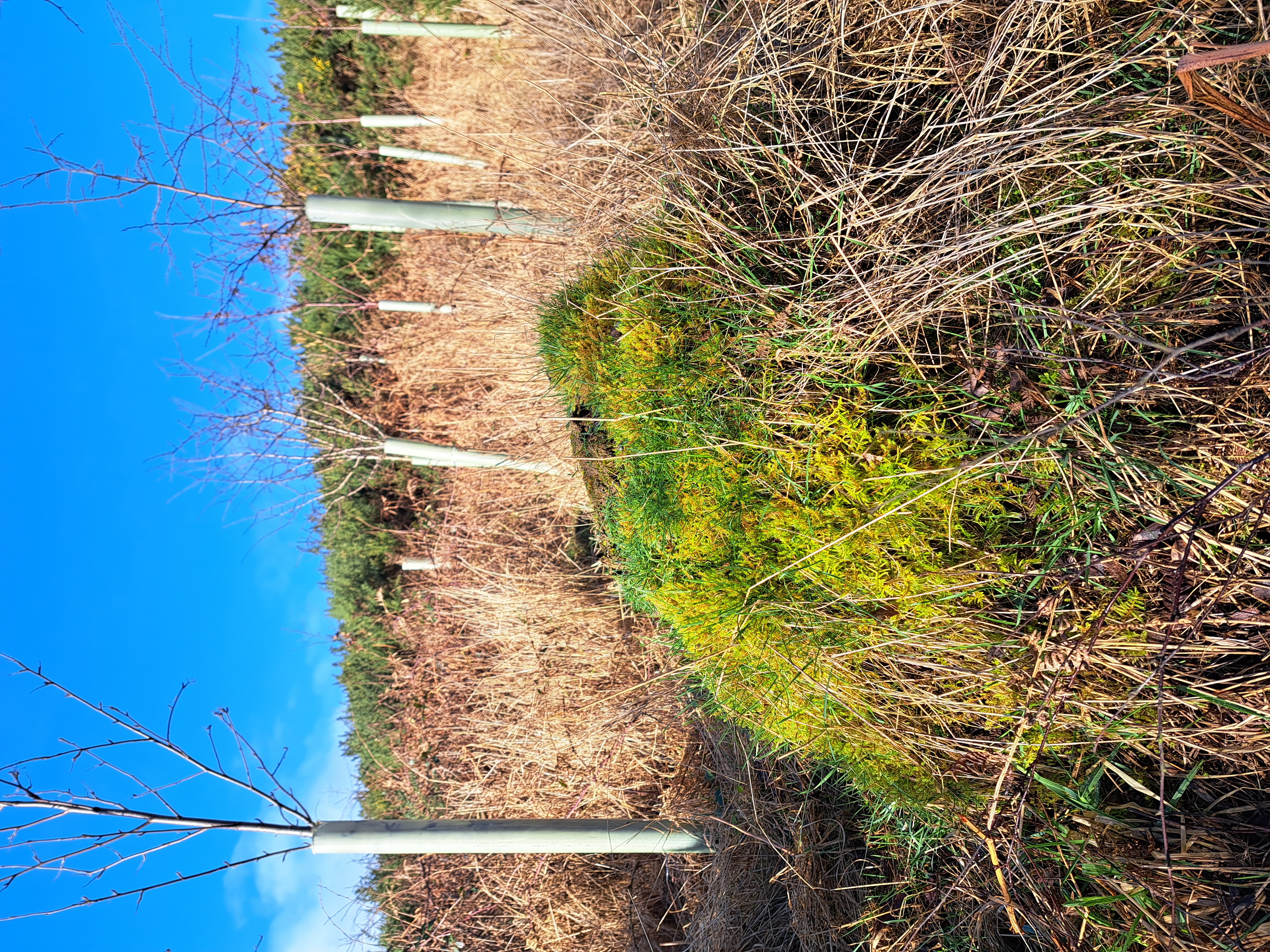From Forest Carbon's Junior Project Manager, Daniela Smith
Going out on-site for project verification is more than just a routine task required by the Woodland Carbon Code (WCC); it's a fantastic way to see our projects in action and observe their impact. Under the WCC, ‘Verification is the ongoing evaluation of the project [...] Verification will assess the carbon sequestration that has actually occurred as well as continuing management to the UK Forestry Standard.’
Since starting at Forest Carbon last year, I’ve had the pleasure of heading out on-site for several ‘Year 5’ verifications. Most recently it was to survey Meigle Farm, a 13.8ha project near Clovenfords in the Scottish Borders.
This verification was conducted over two days due to the nature of the planting, which is spread out in several pockets across the site. While on-site we saw several encouraging examples of the biodiversity uplift and habitat conservation that our projects typically deliver.
As a picture speaks a thousand words, I’ve included a ‘highlights reel’ of the site visit below.
Biodiversity is thriving
There were signs of thriving biodiversity everywhere across the site. We came across bird nests, burrows, and ant hills to name a few!
 Bird's nest nestled in a young cherry tree Bird's nest nestled in a young cherry tree |  Close-up of bird's nest in tree |  Anthill |
A resilient Birch
We spotted a particularly impressive birch which at first glance appeared dead but was still shooting upwards, albeit in a slightly different way to the trees around it. A clear example of the resilience of nature.
 |  Birch tree shooting upwards from dead branches |
Lichen galore!
There was an abundance of lichen in one of the planting pockets of this site. Lichen is a clear indicator of good air quality and can tell us so much about the landscape we are standing in.
 Close-up of lichen |  Lichen growing on a tree |
The Spruce and the Fir
The uniqueness of each tree species is also apparent. The photo below shows a comparison of Norway Spruce and Douglas Fir, showing the difference between early growth rates for different tree species. Guess which ones are the slow coaches!*

Young Norway Spruce and Douglas Fir
‘Office’ view!
It is fantastic to see the numerous environmental benefits supported by our woodland projects; some things are best appreciated in person. That's not to say there haven't been a couple of verification visits where the comfort of a warm and dry office wasn't appealing… Two waterproofs are better than one on those days!
 Sunny landscape with rainbow backdrop
Sunny landscape with rainbow backdrop
Seeing the variation of projects makes it abundantly clear that no two areas of the same site are the same, let alone separate projects. There are many unique features of each project which will be influenced by their locality and conditions. It has been very enjoyable for me to see the projects in person and not just through the perspective of the spreadsheets and documentation.
*Norway Spruce playing catch up to the Douglas Fir.
/public/694/2e2/b68/6942e2b689131175280316.jpg)
/public/692/dd7/e0c/692dd7e0ca905474952387.jpg)
/public/68f/f39/36d/68ff3936defff352354004.jpg)